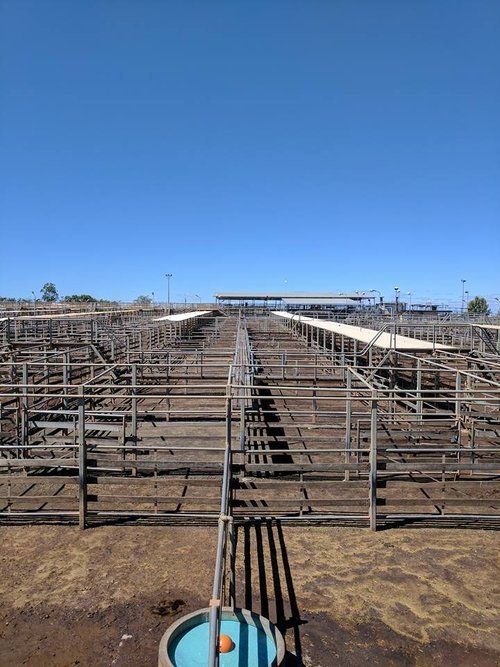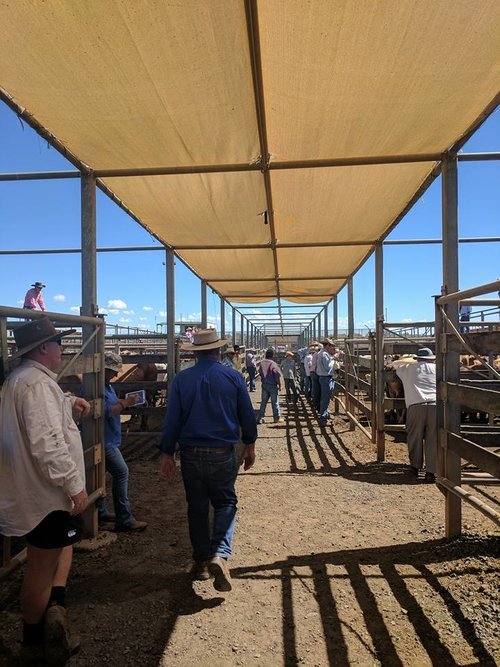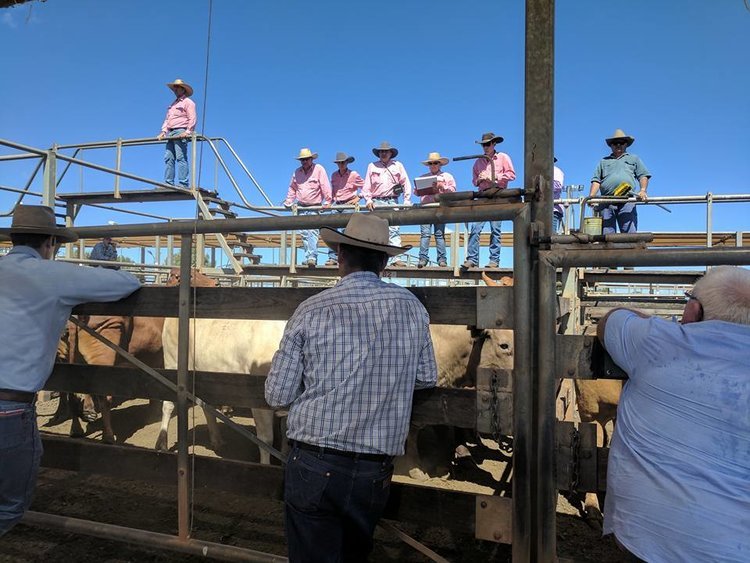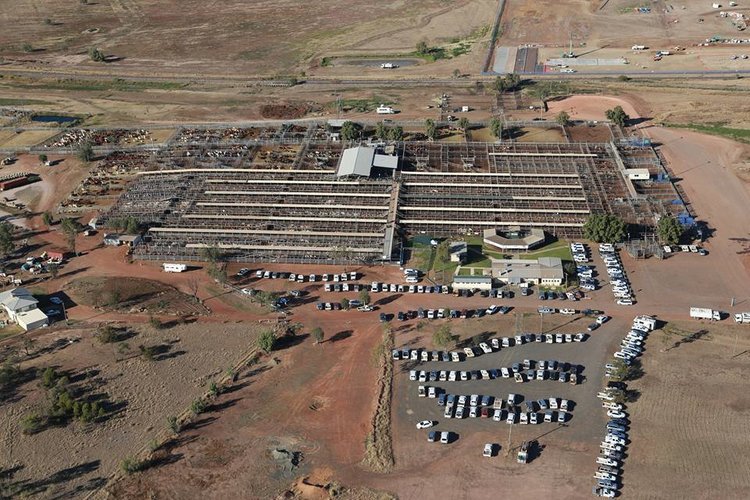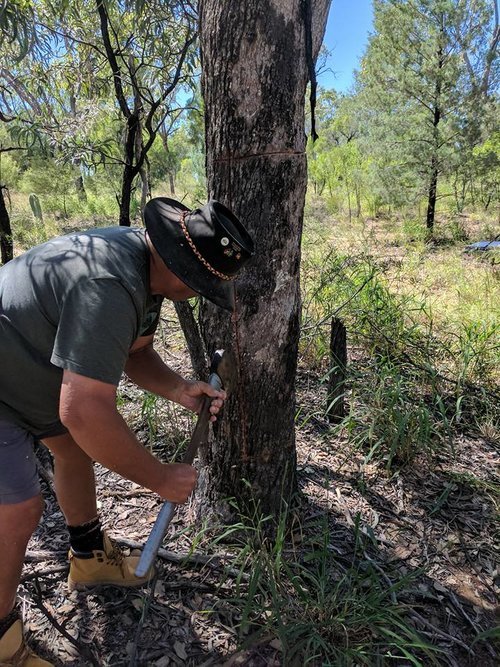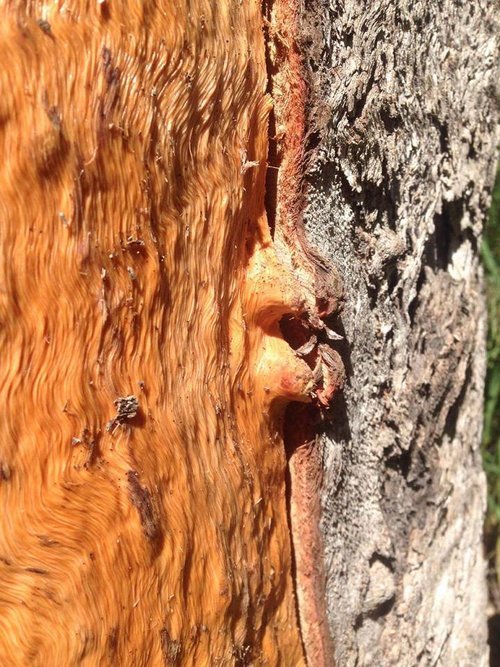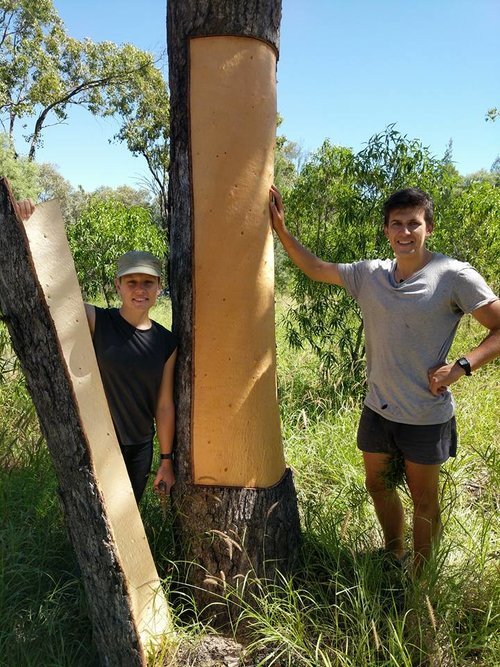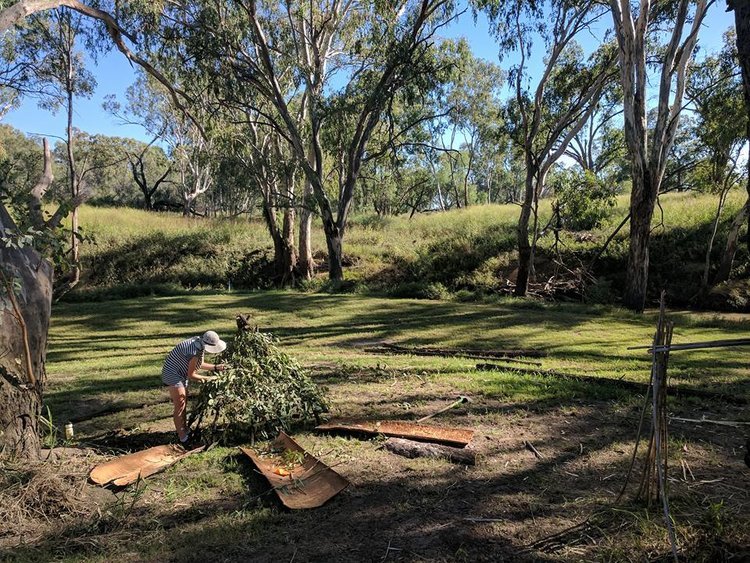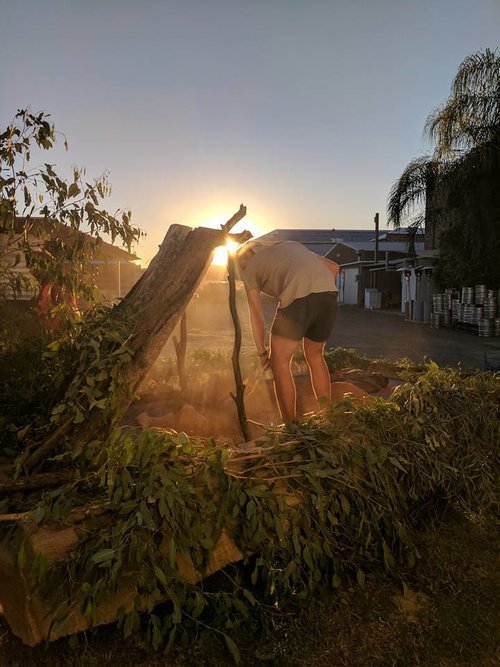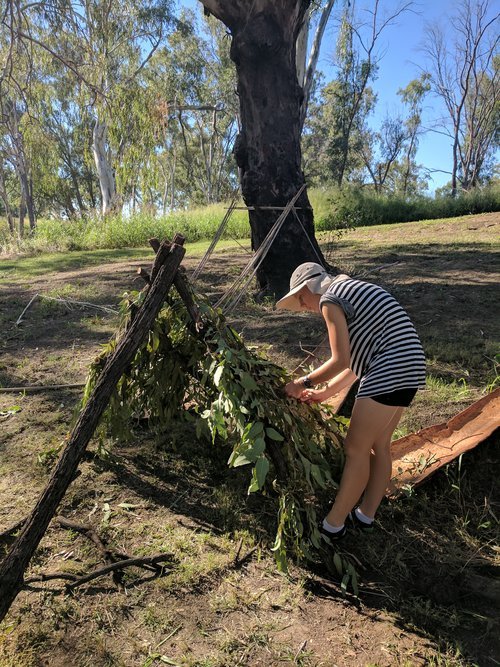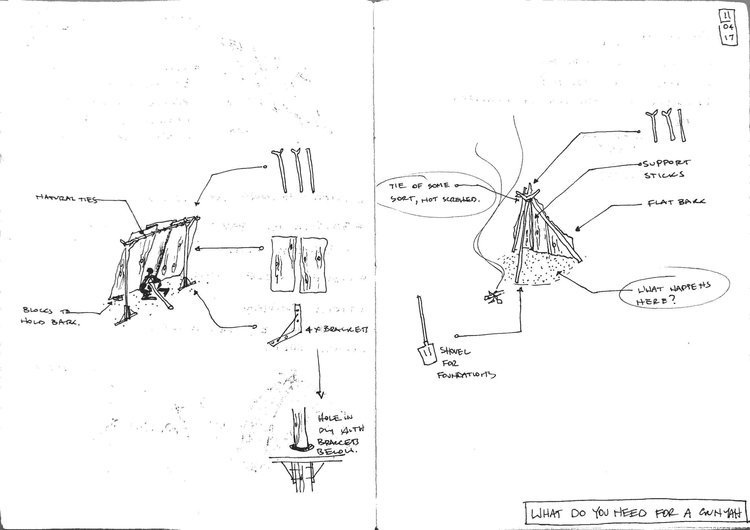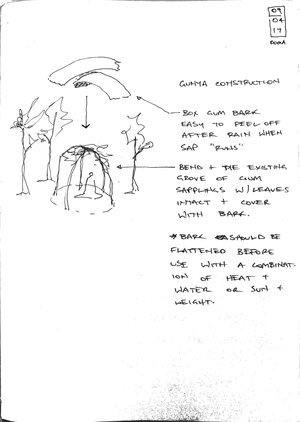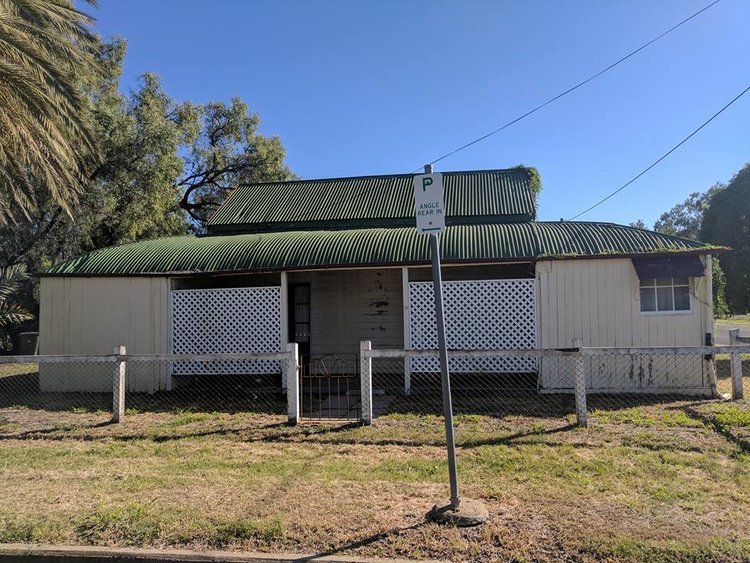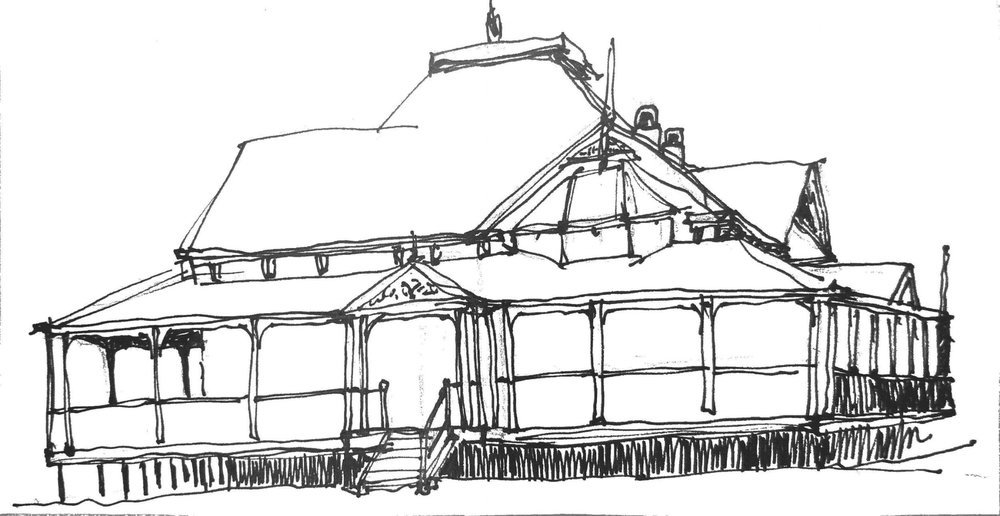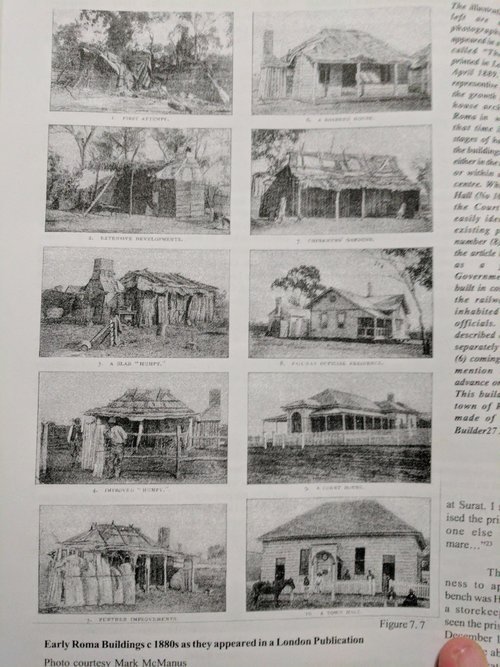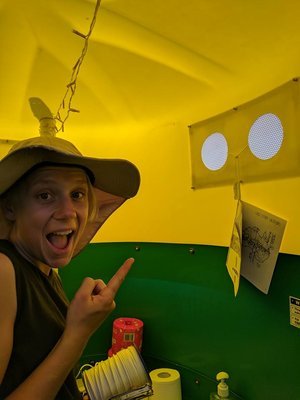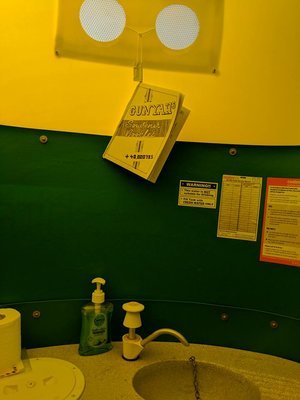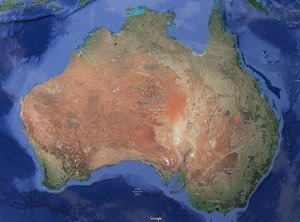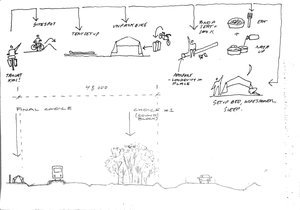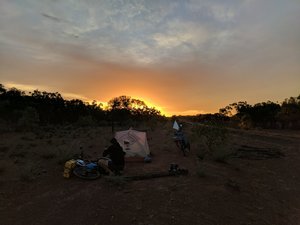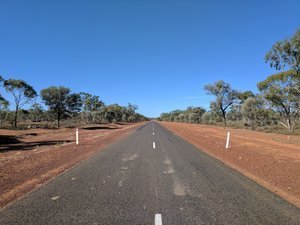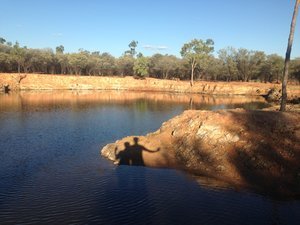The Grand Section Guardian #006 - Stop 04, Roma/April 26, 2017
A whirl wind to say the very least. A scheduled week turned to two quite quickly, cutting out the next stop Charleville. The Mandandanji chair person, Darren, with overwhelming enthusiasm and persuasiveness about the work going on and was able to convince us to play a part in their dreaming celebrations. It's Gunyah get wild!!
Place
The town of Roma is a slowly growing town located at latitude 26°34’31.32” S and was the first gazetted settlement following Queensland’s separation from New South Wales in 1859. It is a country that is resource rich in natural gas and oil. Fertile alluvial plains made up of reactive “black soil” surround the Bungil Creek that has been a food and water source for over 40,000 years, as witnessed by the Mandandanji people.
In more recent times these natural resources have seen developments in Gas and Oil extraction (accidentally the site of Oz’ first natural gas discovery), sheep and cattle grazing and tapping into the Great Artesian Basin that dwells some 550 meters below the town. Roma and many of the settlements west of the Great Dividing Range rely on artesian water. This being water that is trapped in underground reservoirs of porous, permeable rock, often at great depth.
Today much of the country around Roma (often as a result of land clearing) is timber-less, other parts are timbered with brigalow, Myall, Sandalwood, Wilga, Whitewood, Broadleaf Box and silver-leaf Iron Bark. Very sandy parts are covered with Cypress Pine, supplying nearby pine mills and hence broader Australia.
The climate is ‘dry’ with statistics showing April – September being the driest period of the year. Winter is said to be short and cold, nights often below zero. As seen by the army of air-conditioners the real killer is summer, temperatures getting to a consistent 45 degrees, flies an expletive inducing nuisance.
Roma; “Center of the South West” is the commercial hub of a vast grazing area with the largest store cattle market in Australia. Once sheep, now as a result of dingoes and other factors the major industry is cattle, where the biggest Cattle yards in the Southern Hemisphere lie just outside of town and attract buyers and sellers from as far west as Alice Springs. Geographically, Roma exists in a pivotal place – at a crossroads of the Warrego and Carnarvon highways, major transit routes formerly defined by Cobb & Co and probably aboriginal pathways. At this intersection, a north turn takes one to Emerald, south to St George & NSW, east to the Sunshine Coast and west to the border and all the towns in between. A place where long affiliated locals, new comers, foreigners and many generation of families meet.
People
The traditional owners of the land are the Mandandanji people, today made up of some 4000 members, with 300 living descendants embodying 14,000 years of direct connection to country and a history spanning at least 40,000 years. Mandandanji meaning “fishing net people”. The Mandandanji thrived in the Roma area, living off the fertile Bungil Creek and black soil plains. Significant sites exist within the town of Roma, including Bora Rings, Burial Sites and the second Native Police Barracks located on a beautiful riverside location between Roma & Surat, some 86kms dew south.
One can only imagine the brutality the trees would speak of if they could talk. The Native Police were federally funded Aboriginal troopers usually under the command of a white officer who were notorious for massacring aboriginal camps who were near white settlements. Over the past two decades Mandandanji have been fighting for native title, which is yet to be determined, particularly odd considering all the surrounding mobs have been granted their claims. The mob today are taking initiative with reconciliation renting a street front office providing a “grass roots” presence. They have bright hopes for the future and their reconciliation on country with great projects in the pipeline. At the heart of this are reciprocal relationships, such as ours with them now.
Sir Thomas Mitchell journeyed on from St George eventually coming to a mountain on 7th May 1846 (the site of Roma). In raptures over its beauty and richness he very originally termed it “Mount Abundance”. In the following year, New South Welshman Allen McPherson took up Mount Abundance, building his bark hut 20 miles from what is now Roma. Reportedly “he had serious trouble with the blacks, coming into collision with them from the beginning” where eventually he was driven off the land.
Stephen Spencer purchased the 500,000 acre station in 1857 and built the first homestead building of the area. Heritage listed and still in the family one can visit the homestead today (except when cyclone Debbie comes through, bitch).
Roma History Lodge is a group of about 10 local volunteers who have taken on the mammoth task of indexing all of the areas paper and photographical history. Maree Worland and Ray Howson are forces to be reckoned with in Roma’s historical scene and steeped us in history, knowledge and access to it all. The Group has aspirations to create accessible history for all of Romas’ families and community as well as the creation of a historical precinct within the town tying into a historical route of the whole south west Queensland.
A common theme we have noticed in rural towns, looking to the past in the hope of ensuring a future. The raised building in which they operate from is a timber weatherboard relocated odd fellows building, how great is that! With an extra shed added out the back connected with a deck for archives it speaks typically of the ‘architecture’ of these towns and prevalence of adaptive re-use and re-location! The buildings are not necessarily effective for their new purpose, are not site specific responding to environment or highly functional in layout but the operators of these buildings just make them work. Adding bits where and when needed with the typical bushman’s mantra “you just make do with what you’ve got”.
Huge thanks to the "Roma and District Family History Society Inc", some of the wonderful volunteers pictured here, who have set them selves the mammoth task of recording and indexing all of the Roma areas paper history. For $30 these captains of history will seek out all the info they can on your history. What a bloody top community service!! Click here to link to their facebook page!
Darren Manns is the Chairperson of Mandandanji Ltd, an organization that aims to promote and preserve Indigenous Cultural Heritage within the traditional Mandandanji lands. With 40 trained cultural heritage monitors and elders working with archeologists, anthropologists and phycologists, they are working as active custodians preserving their sacred places and landscapes.
A testament to his enthusiasm and energy is the shop on Alfred Street which provides an indigenous presence in the town street scape and is the headquarters of the Mandandanji mob. The place is always flat stick, elders and youngsters strolling past dropping in for a chat and a cuppa’. It’s quite inspiring, the ability for a space with basic amenities and a ready cup of tea, regardless of size or “architectural merit”, to unite a group of people. Fantastically this was the first place we were able to actively engage with the indigenous people of an area, a large part as a result of this shop front!
The excitement never stops when models are on the table!! The Mandandanji meeting room!
Stuff (Architecture)
Roma’s architecture is predominately white, being the case for many Australian towns, however, lucking on the chance to spend some time with the Mandandanji mob we thought we would take the opportunity to explore some other Australian architecture with some firsthand know-how on tap. Gunyahs!!
Gunyahs, also known as Wurlies is the term for shelters used by indigenous Australians that varied in form and function depending on the climate, length of stay, season and available materials. Like white fellas these structures were built around key resource points, generally food and /or water. Some tribes used seven or eight structures a year which responded to the varying seasons and weather patterns.
Examples of different variations of seasonal structures from Paul Memmott's Gunyah, Goondie & Wurley. A fantastic resource!
We were briefed on creating a Gunyah at Walkabout Park to stay as a more permanent structure and also to transform a car trailer into a float with a traditional Gunyah setting for the parade. So what’s the best way of communicating with people? Why, models of course! Through research (& a quick response from the excellent P. Memmott) Owen did a great job of recreating three different model Gunyahs typical to the SW QLD area. Made with tiny sticks and bent bark on pieces of fire wood (kindly ‘donated’ from the back of a near-by pub) they were shown to the elders for judgement and feedback. We returned with a post-it note stating “winner”. The models although of small scale were an excellent insight into construction methods and material sourcing.
Of course we wouldn't go to all the trouble of making models and then forgot to take some decent photos of them.
The legendary Uncle Duck then took us out to collect bark and forked branches from Box Gums, teaching us the not so traditional method of chainsaw to cut out the bark shape needed. Walking through the bush, he taught us of the plants, the trees and medicine and how it was knowledge passed down from his father and uncles. Now, to overenthusiastic white fellas.
As with many of these towns, the public buildings hold an aspirational air where pubs are common place and of locals routines. The first three white buildings erected in the town were hotels, before they built a single house. As per previous towns, older houses are predominantly of timber weatherboard and corrugated iron built off the ground, with louvered or screened in verandahs as response to the reactive black soil and climate. The “BIG MYSTERY” of Roma is what we dubbed the “bastardised bull-nose” particular to Roma and towns up to 300kms west, there is a roof profile of bent corrugated iron. Only to verandah spaces, the profile is devoid of structure underneath and at times has sagged the other way. No one seems to know where, when or how it came into fashion.
General Lot size is 800sqm where council told us this was a response to the common resident of a rural place, having large cars, caravans, trailers and the lot. The happy medium between a property and small town block. Gradually over the years, the identity of the town has changed. As in many places, such as 2010 in response to the boom in oil & gas, quick, easy and cheap homes were built on artificial hills in a flood zone which as a result flooded the “blue-ribbon” district of town…oopps. Many of these houses are brick veneer (brick venereal disease), slab on the ground & road facing (regardless of orientation) which of course are incorrect for the place; #1. Doesn’t respond to the heat of this climate (Heats up in the summer and radiates heat late into the evening while in the winter they stay cold) and #2. Doesn’t address the reactive black soil. These homes now have cracking walls, shrinking slabs and pavements.
Surely a considered and effective architectural answer could be at the ready for situations such as this, to ensure longevity of environment, livability of space and sustainability of materials and resources. Maybe we should have seven or eight different house types, depending on the weather!?
Exhibition, Saturday 15th April
As a response to the fast paced Easter festivities spread across town at the time and not being able to define a particular audience, presentation time or mode we decided to utilize a format accessible to all and one to be consumed at leisure rather than a dictated time or place. A GUNYAH ZINE! With a cover mimicking a souvenir booklet about Roma’s history from 1978. The indigenous content is immensely valuable and often unknown even to indigenous peoples, being in the format of a zine it can be physically shared along with the story of coming across it or experiencing the built Gunyahs or two students on walk about. Hung inconspicuously as light reading for time in the shitter, within piles of site maps and alongside bush tucker being sold, the audience was broad. Much broader than usual. The zine uses crappy jokes and mapping of the area to give context to the Gunyah booklet and research. Have a look below and read it for yourself, or download the booklet and give it to your boss!!
Click here to download your Gunyah Zine booklet today!
As a response to studying Roma and the Indigenous architecture particular to the area, we came up with some suggestions:
Keep in mind the soil type; black soil is reactive. Footings need to be able to accommodate the movement. Seen commonly in the older buildings, the use of piers are effective.
Consider the weather; designing for year round changes. Seven different houses maybe?
Mind the flood zone; understand flood areas and levels. Piers double as a response to this to raise the dwelling above expected water levels.
Shading; to the north and west is common and required. Heat here can be unbearable. Keep the sun off external walls to minimise heat gain and keep ambient temperature around dwellings low!
Think about others; when moving 'dirt'. If raising home up by building an earthen mound to avoid flooding etc. be mindful what will happen to your neighbours with the water shed. The blue ribbon district unprecedentedly flooded due to a new suburb built up and redirecting flood water their way.
The bastardised bull-nose; is particular to the place. Keep it alive and include it in your new design? Put it everywhere.
In Transit (in reflection)
As we told the mob of our architectural & cycling odyssey they all replied with “you’re on walk about”.
I guess we are, looking for something learning by doing. When we departed Walkabout Park Darren handed us a branch of Budda bush. He said use if for your first fire, the green smoke will keep the mozzies away and it will be a smoking ceremony. When you leave brush away your footprints to keep your spirit with you on the trip.
We rode into the morning onto the fifth stop, Quilpie some 478kms due west along the original Cobb & Co route. Estimated seven days, but being committed to covering more ground, we arrived in five. About 260kms west and we were on the edge of the sustaining riparian corridor in which we inhabit, where the dirt quickly goes from brown to red. Trees and plants are of a different kind, most predominantly genuses of acacia. Shade more sparse and valued, rocky soil and larger straights of flatter ground (don’t ever listen to a road worker when he tells you the next 100 kms is flat, if he drives a car).
Many say there is nothing in the red centre; maybe it is that we are still partially on the edge but we saw and continue to see many-things. Animals alive and dead, maintained fences meaning man defined boundaries, dingo fences meaning man created exclusion zones, many a vehicle in transit and thriving little life (all through our food and over our tent). Either a result of increased fitness or easy terrain, (the latter most likely) the last day hosted our longest distance covered yet, 120kms. A stack on Bobbie’s behalf saw her over the handlebars, a little battered and of perfect timing, as conveniently a police car pulled up not long after. Her reply being “yeah we’ll be right once we get to the pub and have a beer”.
And so, here we are in Quilpie, for a pub feed and a beer as reward.
Edited by the fantastic Jen Richards
Cheers,
Dusty & Thirsty

